Medellín, Colombia has come a long way from the days when this antique represented its mass transportation system.
Let's pretend for a minute that there is a higher power and that karma punishes undeserving souls who sit in high places though they should be behind bars. With the sky falling in the U.S. and consequently around much of the world, I needed to go to Medellín to see what is possible. And what an uplifting trip it was. A chance to see the lively city of over 4 million (greater metropolitan area) set among the beautiful green Andes. And a chance to ride one of the best integrated transportation systems I have experienced.
Rush hour at Metro Poblado. Light, airy platforms make the short wait for the above-ground train less soul crushing than the wait for the A train on the grimy platform underground at New York´s Port Authority.
True, like too many of the world's great cities, Medellín's streets are still choked with traffic. But at least for those served by its varied, integrated transit system, there are options to being chained to the steering wheel of a killing machine on wheels.
With bad things happening all around it was good to travel from Mexico City, a transit mecca in its own right, to a city that has experienced its share of struggle and hardship and has nonetheless found a way forward. At least when it comes to public transportation and liveability and open space, ¡Medellín es una chimba!
Metrocable San Javier (Línea J). SInce opening in 2004, El Metrocable de Medellín has been transporting passengers to harder to reach parts of the city. The success and relatively lower construction costs of Metrocable have inspired other cities including Mexico City (CDMX), and Estado de México (Edoméx) to develop their own Cablebús lines.
In Medellín, chimba means good, pretty, great, extraordinary or very interesting. Medellín is all of that and more.
Visiting Medellín reminded me of the possibility many of us felt in November 2016 when Measure M was passed by 71 percent of Los Angeles County voters. Sure, I remember what else happened on Election Day in 2016, but let's focus on the positive. A collective commitment to address Los Angeles County's permanent transportation challenges with the passage of a no sunset transportation sales tax, the largest public works shot in the arm in the history of the United States.
Now before you holler, what about the situation in the northeast of Colombia, an area bordering Venezuela, as well as the Colombian president's spat over migrants with that dangerous convicted felon back in the U.S., I know… Both are horrible and challenging developments for the region and lives involved. But Medellín remains a beacon of what cities can and should do to meet their transportation and open space demands.
While visiting Medellín and riding its integrated transportation, biking its ciclovías and visiting its parks would have been enough to convince me of all the city has achieved, I was also fortunate to meet during my stay with Irene Gaviria Correa and Carlos Cadena. Trained as a lawyer, journalist and administrator, Irene is the former editor and director of El Mundo, a liberal newspaper that closed during the Covid pandemic. El Mundo was a counterbalance to the other Colombian news sources. As director and daily editorialist for almost 10 years, Irene's writing and related community involvement helped advance a more inclusive and pluralistic Medellín supported by an albeit too rare alliance of government-corporate-civil society initiatives aimed at achieving community development for Medellín and Antioquia, Colombia in accordance with the U.N.'s Millennium Development Goals. These goals include halving extreme poverty rates, halting the spread of HIV/AIDS and providing universal primary education.
Carlos is the former Secretary of Mobility for Medellín, a consultant to the IDB and UN-Habitat and co-founder of various civil society organizations on climate issues, air quality, mobility and environmental education. Carlos' work also includes the collective La Ciudad Verde, the Low Carbon City Foundation, and the Humanese cultural resource center.
Special thanks to Julia Rosenbaum, a good friend since college and a public health rockstar at one of the many dedicated NGOs now on the chopping block of the hopefully short-lived current U.S. administration.
The entrance to Tranvía, a fast, efficient streetcar that operates in the Medellín city center.
Tranvía stops operate like efficiently run bus rapid transit (BRT) stations. Gates help keep passengers safe when boarding and exiting the trains.
The view from Tranvía isn't bad either.
In a free-ranging conversation sitting outside in lush green surroundings near the Parroquia San Lucas in Medellín, Irene and Carlos walked me through the decades-long program to remake Medellín as a sustainable city served by integrated public transportation, parks that serve its millions of residents and pedestrian- and bike-friendly streets, vías peatonales and ciclovías. One caveat for visitors and residents alike: aggressive drivers, particularly motorcyclists including deliveristas, make crossing some streets a challenge.
Bus rapid transit (BRT) in Medellín was the only public transportation disappointment for me. While paradas (stops) are bus-only, along the route itself buses tend to flow with traffic rather than in their own lanes.
Parques del Río
Imagine a linear park on the river that reconnects the two parts of the city of Medellín. Imagine, extending that park to 32 kilometers long in all. That is where our conversation started and perhaps deservedly so.
Irene's love of Medellín runs deep. Her brother, a former mayor of Medellín, drove the first phase of Medellín's Parques del Río, a highway cap park where the city has sought to create universal access to public space. As outlined by Irene and Carlos, imagine building an infill park larger than Central Park, over a highway in a city of millions of inhabitants.
A couple of days before we met, I got to experience first hand the appeal of the park during a nighttime bike tour of Medellín.
A nighttime bike ride with Greenbike Tour Medellín exposed me to some of Medellín's impressive bike lane infrastructure as well as to the city's commitment to improving public health through fitness and exercise.
Given the popularity of the park, the expansion is expected to continue.
The park is known as Parques (plural) del Río because the concept is to reconnect the city and its residents with the river in a way that was lost when the highway was constructed. Though the government has changed since Irene's brother was mayor, thanks in part to the popular success of the first phase, the park and its planned expansion is now something the government takes pride in. Phase One of Parques del Río returned part of the river to the people, is how Irene puts it.
Integrated Transportation
An integrated transit system with good wayfaring and automated fare card access.
While both Irene and Carlos spoke of the need in Medellín for construction of an underground metro line with frequent service, our conversation also explored Carlos' commitment to Medellín continuing its expansion as a global biking center, with ciclovías integrated into the regional transportation system. Both Carlos and Irene are also committed to the ways in which grass roots collaboration in urban planning in Medellín has helped ensure the long-term success of the systems the city is developing.
Rush hour at Metro Poblado. Medellín's popular, fast, frequent, clean and quiet metro demonstrates the appeal of its above ground trains.
Irene spoke with pride of the rare public-private partnership that Medellín has fostered to achieve what it has accomplished. She credits dedicated public employees for helping to maintain the momentum of projects including new parks and transportation systems that benefit the public. She also tips her hat to public pride in the Medellín Metro (including Metrocable and Tranvía) as a service while acknowledging that the contracting of the Metro was hell.
Metrocable San Javier, (Línea J).
Both Irene and Carlos also fret over the construction of the Metro in Bogotá, a city which they feel lacks the collaborative public-private understructure that exists in Medellín. Bogotá doesn't have the social connection that exists in Medellín and Irene and Carlos' comments got me wondering whether the Chinese consortium that is building the Metro will take advantage of this reality to fleece the Colombian capital (the way for decades, New York's subway contractors have robbed New Yorkers and the MTA). Given the transformational success of TransMilenio and Ciclovía, two Bogotá and global success stories, hopefully building the metro won't drag down the capital city.
During our conversation, Irene credited EPM, the public utility, with helping keep the government focused on the prize as the public transportation system was being designed and built. To this day, EPM, the state owned hydroelectric utility has a reputation for fiscal responsibility, efficiency and for being a well-administered enterprise. It is the exception to the rule in Colombia and America Latina. At least in this instance, government ethics rose above its reputation for the building of what has proved to be a critical public amenity.
That the hydroelectric power EPM creates is generated in the countryside and that most of the company's largess goes to the city is a story for another day. Arguably, as the principal source of tax revenue for the Departamento de Antioquia, Medellín is giving back to the entire region.
The Medellín Metro is clean and fast with wide (often) open gangway trains.
In addition to Irene and Carlos, a big shout out to Andrés, the outstanding guide at Greenbike Tour Medellín. Riding around the city at night with Andrés gave me a better understanding of the complexity and beauty of Medellín. Particularly impressive parts of the tour were the Parques del Río (discussed above) and the sight of hundreds of city resident enjoying a broad range of free sports ranging from salsa dancing to martial arts to basketball and gymnastics at Estadio built for the 2010 Juegos Sudamericanos.
Who knew?
Next visit, I will take Medellín´s bike share program for a spin.
Yours in transit,
Joel
#medellín #antioquia #colombia #metrocable #tranvía #brt #bogotá #nyc #losangeles #mta #measurem #transit #publictransportation #biking #ciclovía #bikeshare
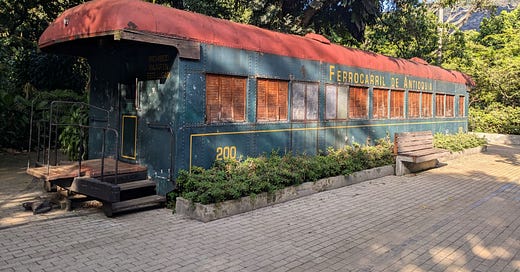



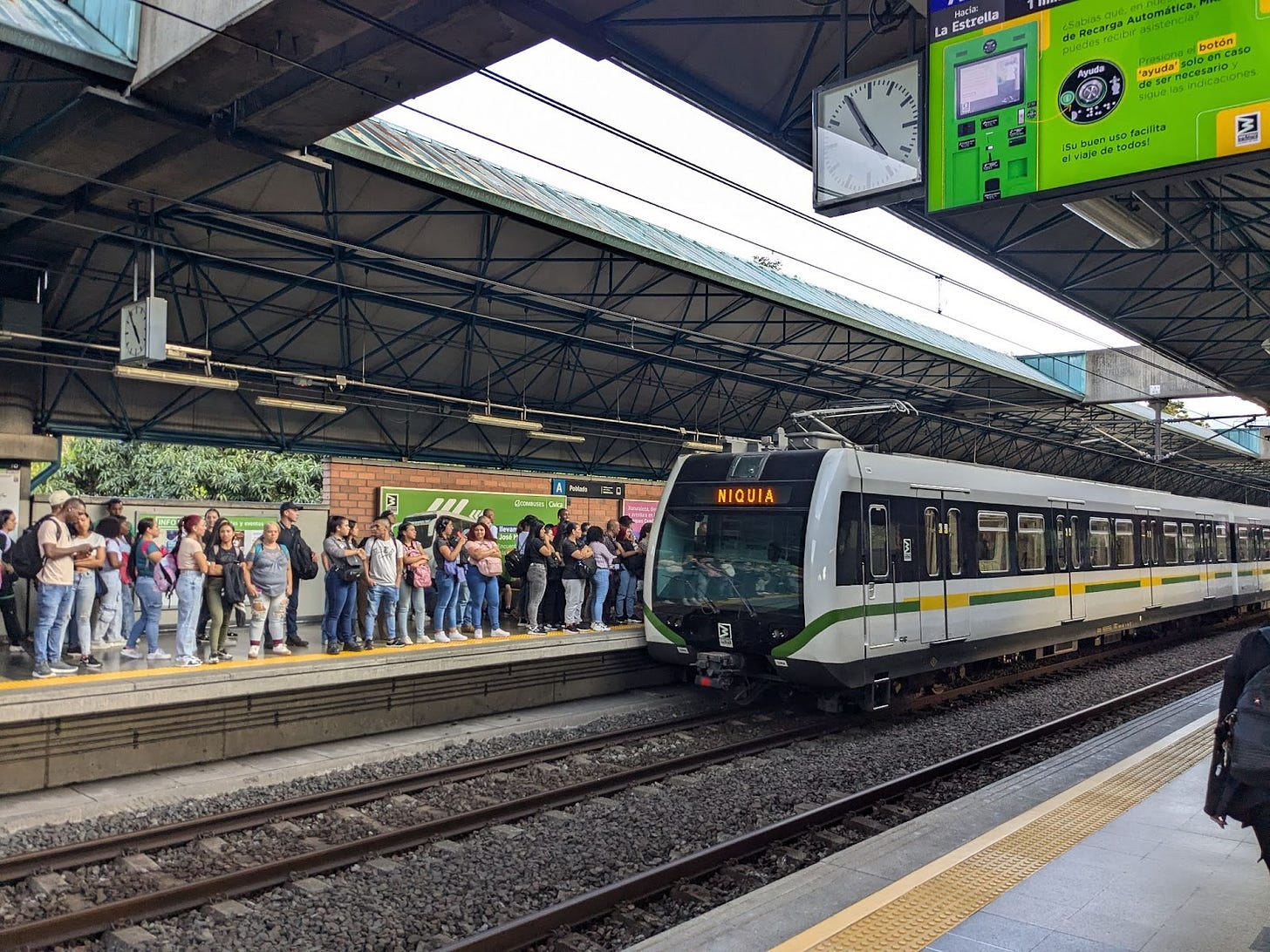


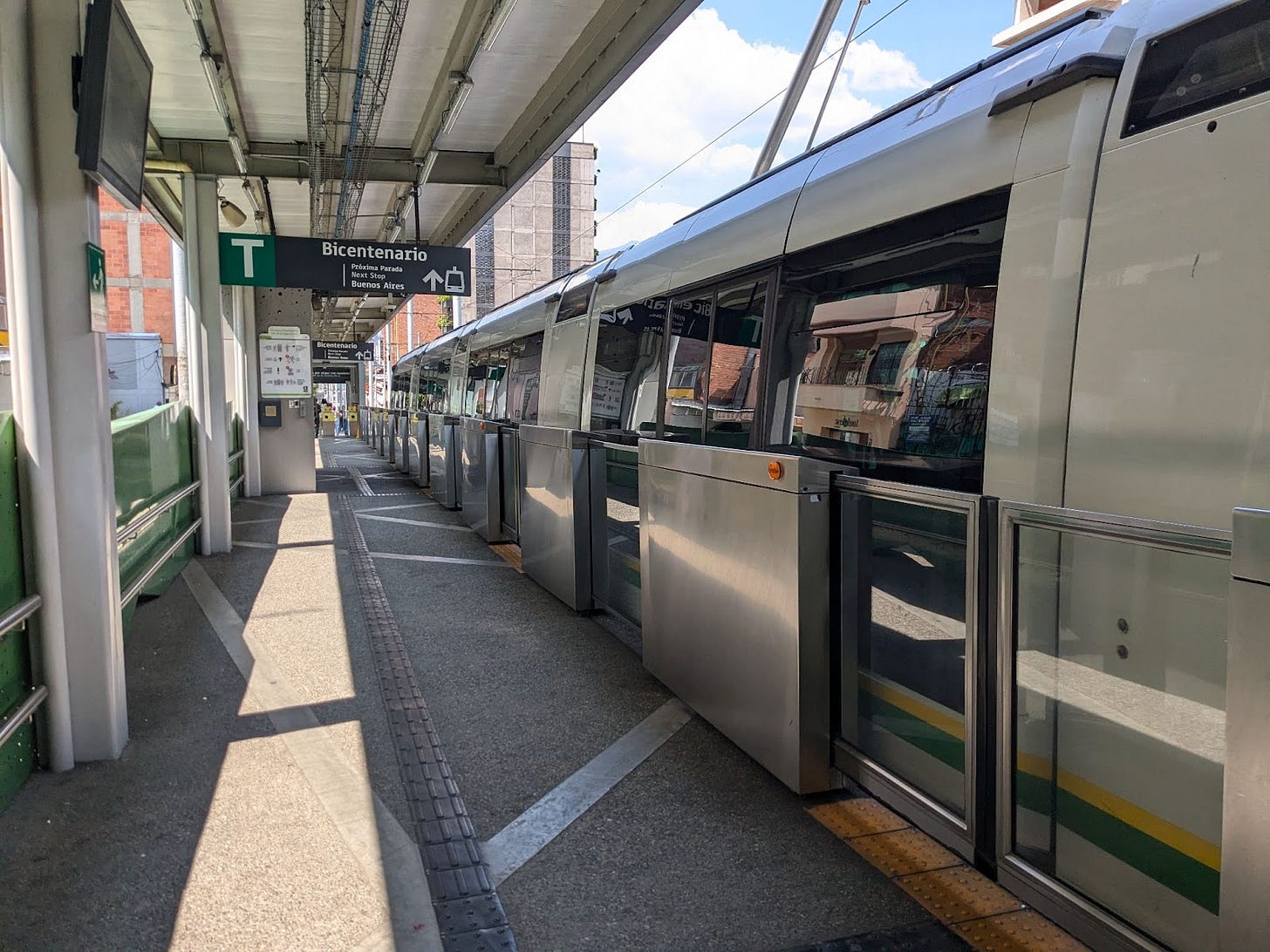
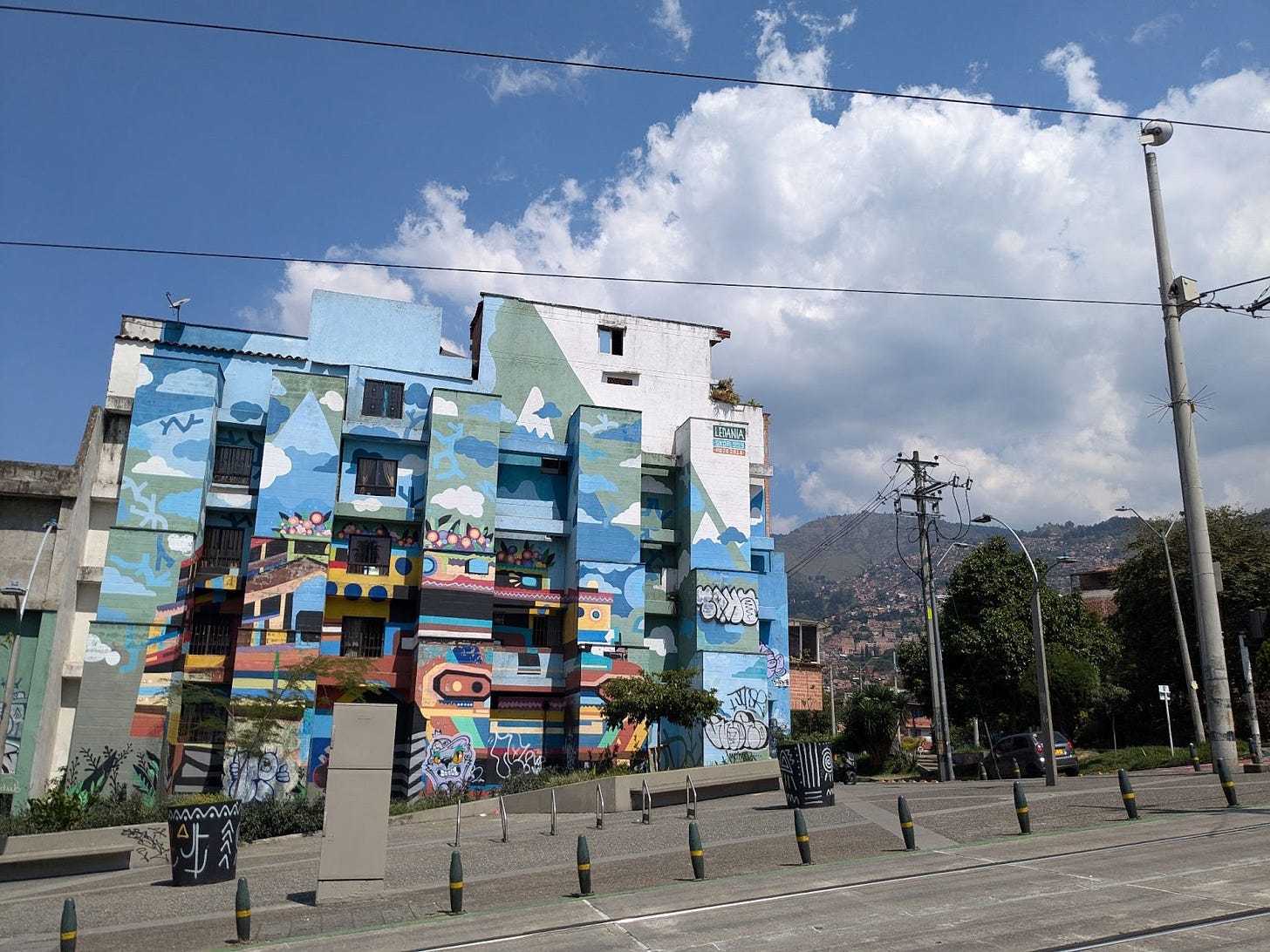


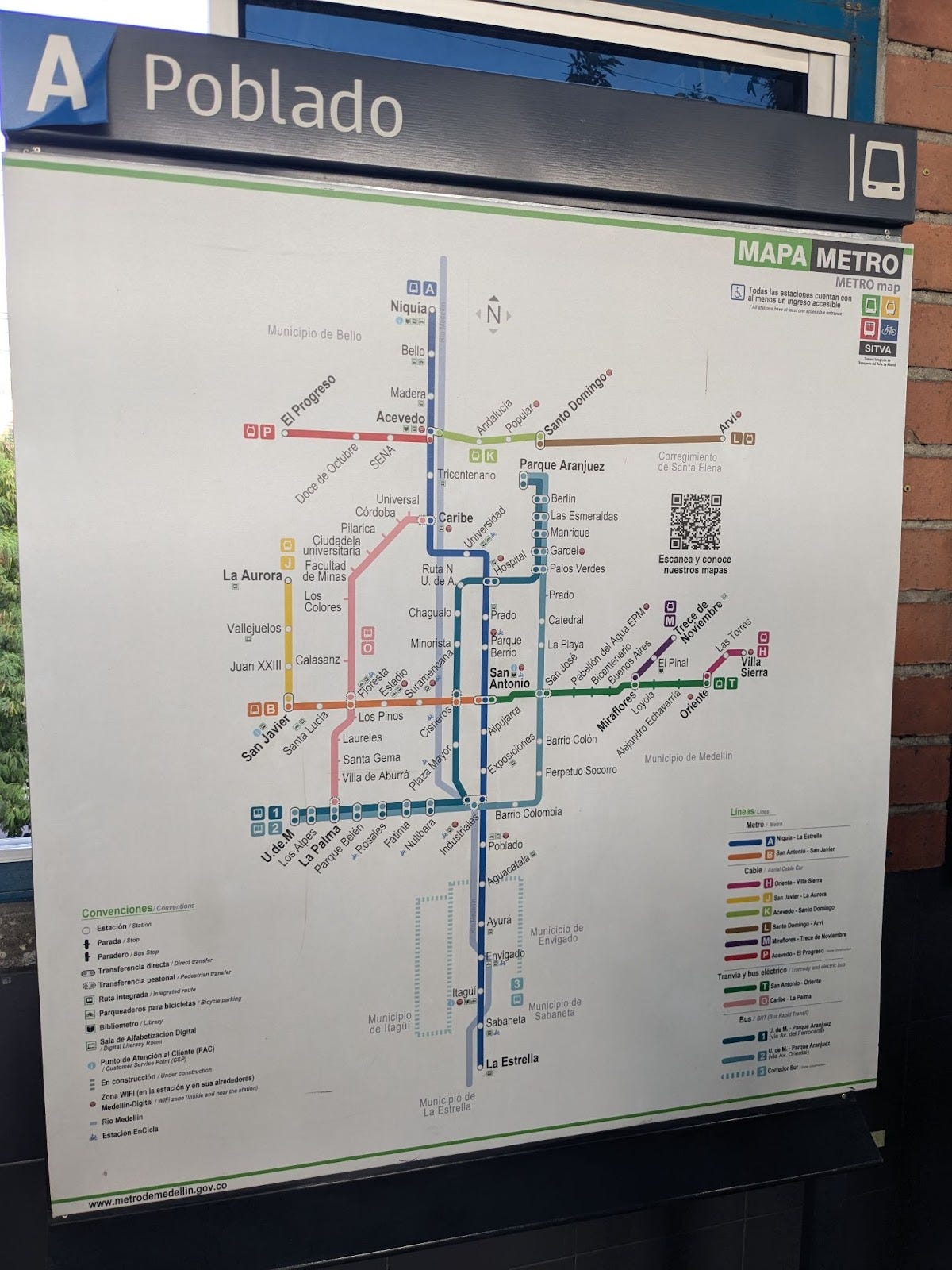
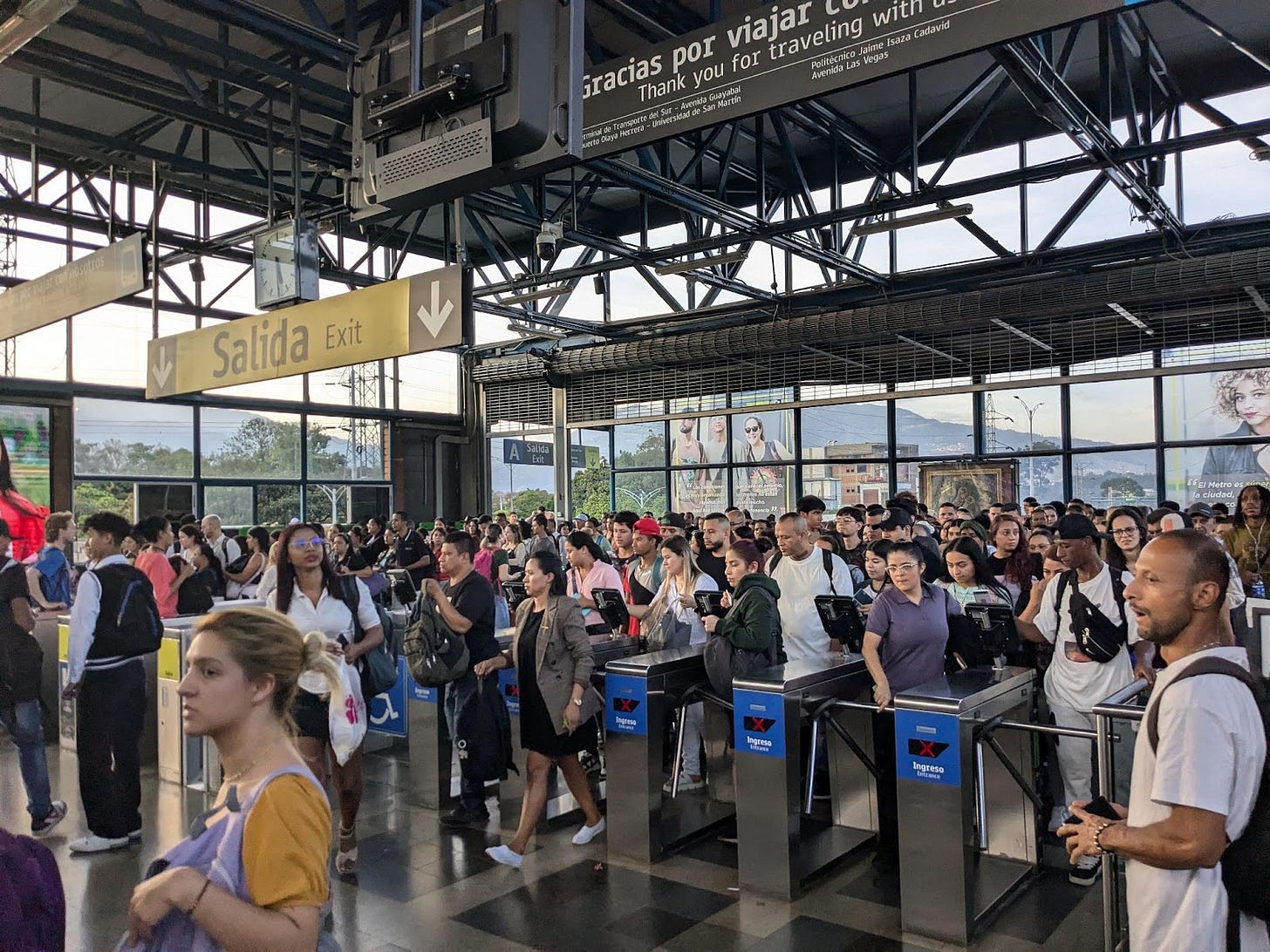

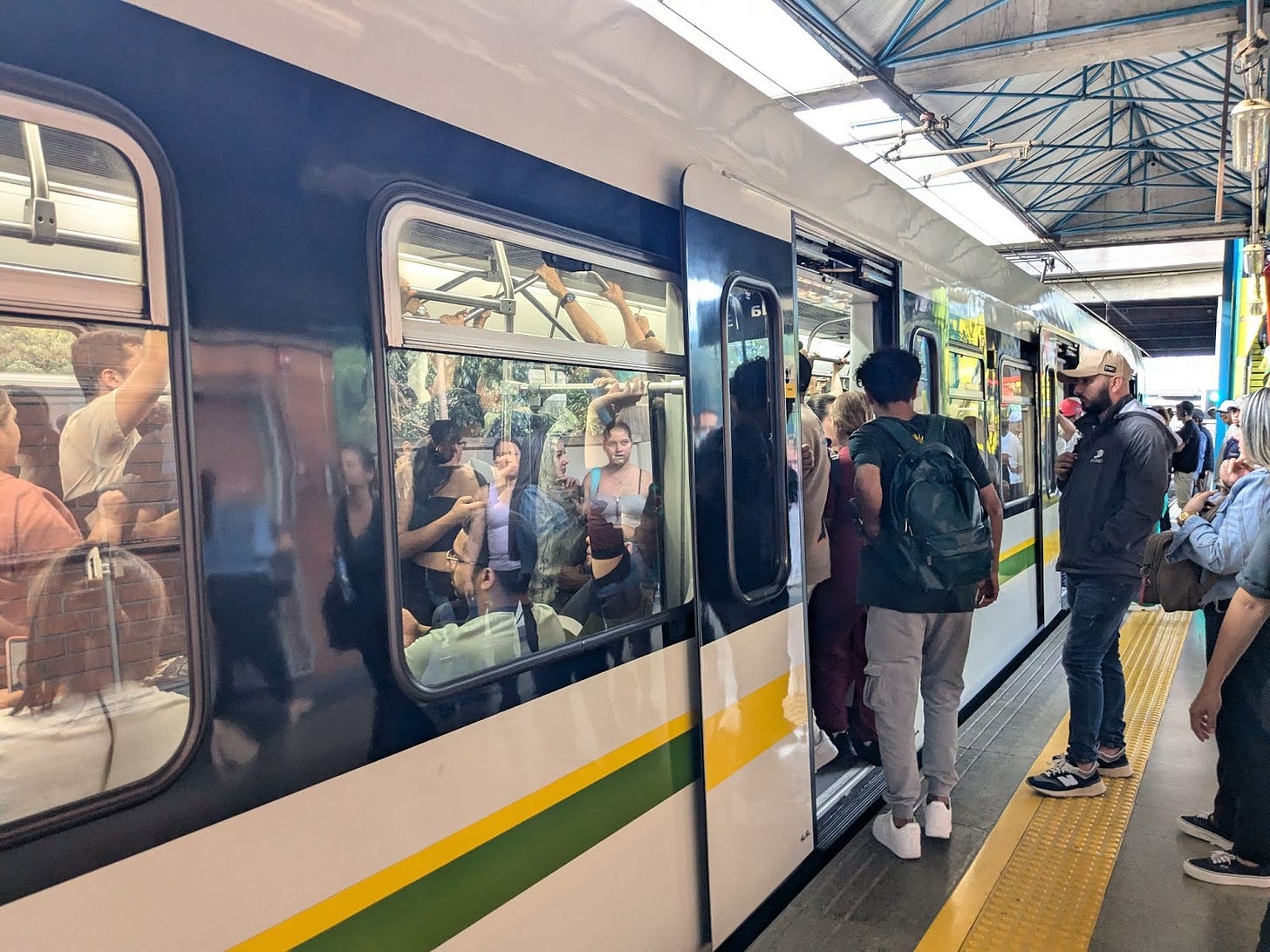
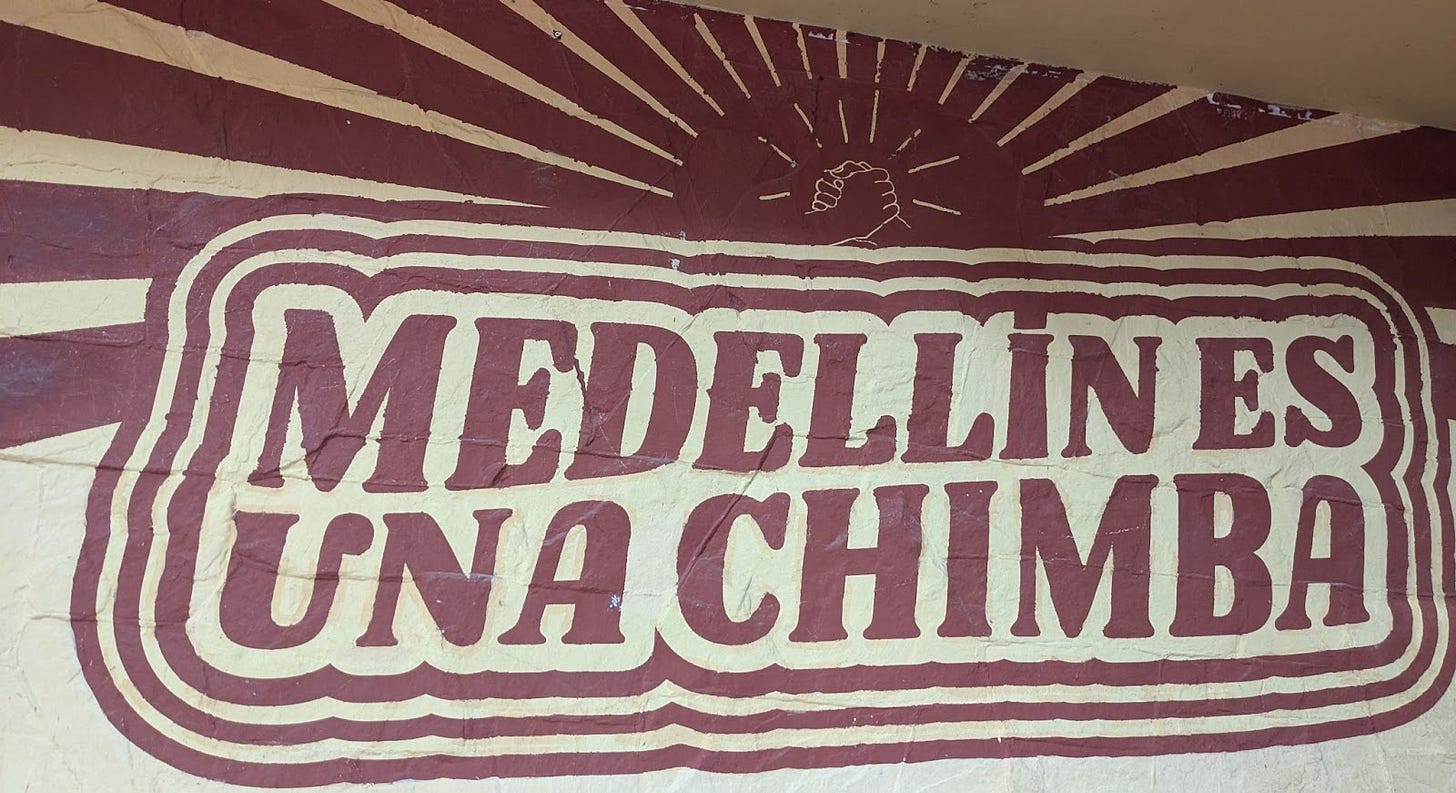
another excellent article. One of the best. If I wasn't a nonagenarian I would go to the CHIMBA